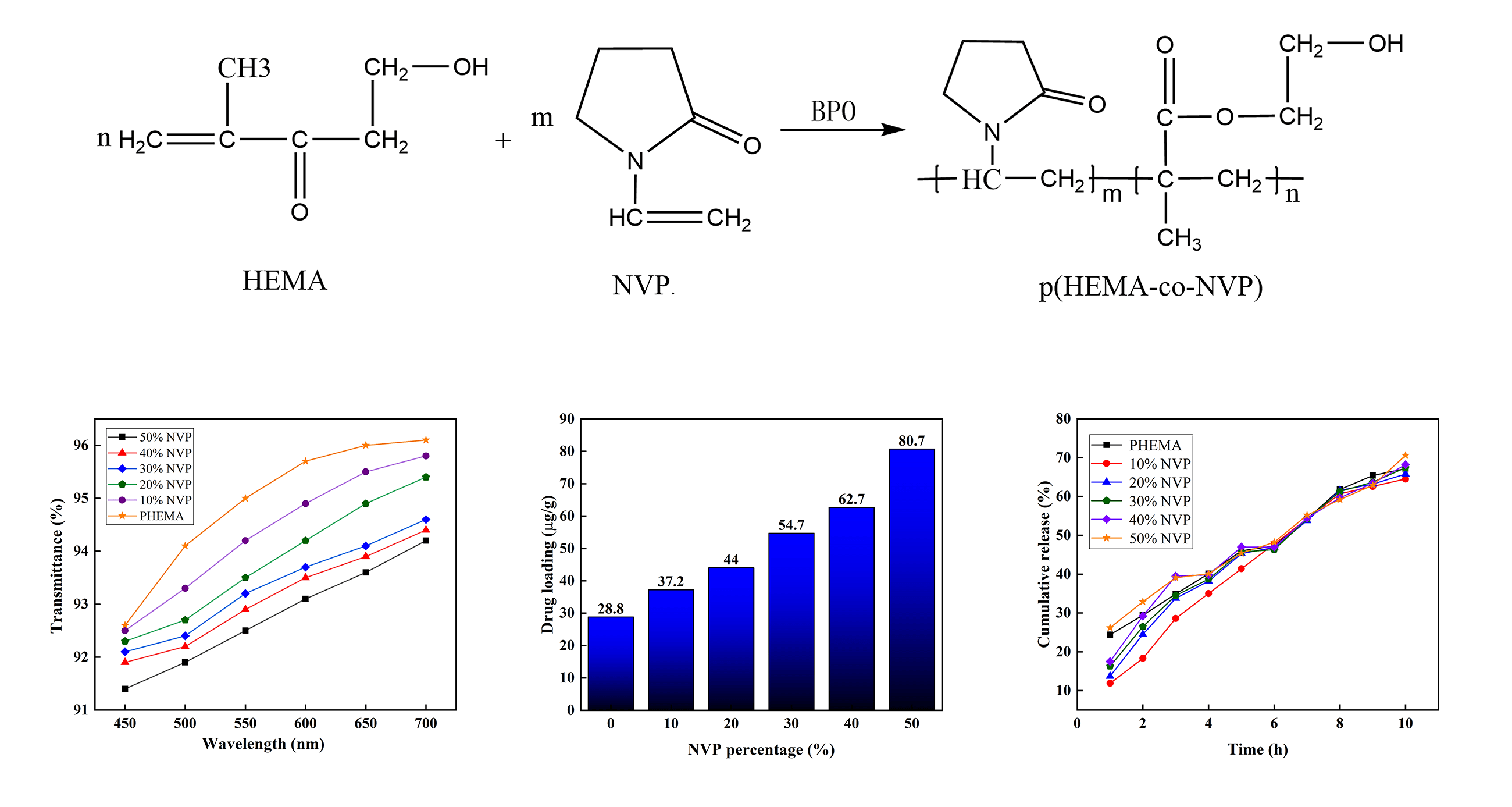 Open Access
Open Access
ARTICLE
Preparation and Sustained Release of 2-Hydroxyethyl Methacrylate -N-Vinyl-2-Pyrrolidone Hydrogel for Ophthalmic Drug
1 State Key Laboratory of Separation Membranes and Membrane Processes, School of Materials Science and Engineering, Tiangong University, Tianjin, 300380, China
2 Department of Ophthalmology, Tianjin Children’s Hospital, Tianjin, 300400, China
3 Department of Materials Engineering, Hebei Construction Material Vocational and Technical College, Qinhuangdao, 066004, China
* Corresponding Authors: Yabin Zhang. Email: ; Lihua Wu. Email:
Journal of Polymer Materials 2024, 41(4), 263-279. https://doi.org/10.32604/jpm.2024.055821
Received 08 July 2024; Accepted 27 September 2024; Issue published 16 December 2024
Abstract
Eye drops are the usual method to treat eye diseases, and gel polymer provides the carrier which could be used for ophthalmic drug delivery. However, the stable and sustained release is the main issue for the ophthalmic drug and is concerned by many researchers. In this study, composite hydrogels were prepared using 2-hydroxyethyl methacrylate (HEMA), and N-vinyl-2-pyrrolidone (NVP) used for ophthalmic drug loading and release. According to the results of Fourier transform infrared spectroscopy (FTIR), the disappearance of the C=C bond in hydrogel indicated that the copolymerization reaction between HEMA and NVP was successful. The hydrogel was opaque and uniform, showing that the cross-linking process was random and even. With the addition of NVP, the water contact angle decreased, and the equilibrium water content increased. Due to the high porosity, the tensile strength of the hydrogel was reduced. The results of X-ray photoelectron spectroscopy showed that Naphazoline eye drops (NEDs) were adsorbed by the obtained hydrogel. The transmittance was above 92% when NEDs were loaded in the hydrogel. The addition of NVP improved the drug loading capacity with a maximum of 80.7 μg/g. When the 10-h release was performed, the cumulative release amount reached about 70% of the total adsorption amount. Composite hydrogel with 10% NVP showed lower cumulative release compared to poly(2-hydroxyethyl methacrylate) (pHEMA) when release operation was performed below 6 h. The linear release of hydrogel with NEDs showed the possibility of clinical application.Graphic Abstract

Keywords
Cite This Article
 Copyright © 2024 The Author(s). Published by Tech Science Press.
Copyright © 2024 The Author(s). Published by Tech Science Press.This work is licensed under a Creative Commons Attribution 4.0 International License , which permits unrestricted use, distribution, and reproduction in any medium, provided the original work is properly cited.


 Submit a Paper
Submit a Paper Propose a Special lssue
Propose a Special lssue View Full Text
View Full Text Download PDF
Download PDF Downloads
Downloads
 Citation Tools
Citation Tools
